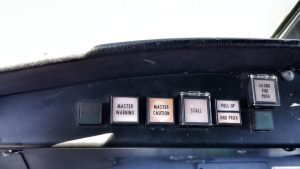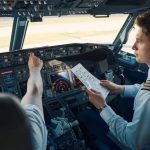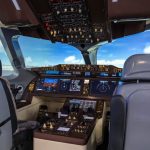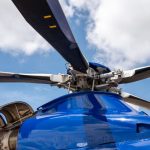Pilot Training for Engine-Out
The advancements in helicopter safety technology, particularly the development of the Engine Backup System (EBS) by Airbus Helicopters, mark a significant leap forward in ensuring the safety of pilots and passengers alike. The EBS exemplifies how innovative solutions can address critical challenges in aviation, such as engine failure, which has historically been a daunting scenario for any pilot.
Engine failures pose a unique threat to helicopters due to their reliance on the engine to maintain rotor speed and generate lift. Unlike airplanes, which can glide for considerable distances without engine power, helicopters need a method to control their descent and land safely in the event of an engine failure. This is where the traditional technique of autorotation comes into play, allowing a helicopter to descend and land without engine power by manually adjusting the rotor blades to maintain lift. However, autorotation requires significant skill and quick decision-making, adding to the stress and risk of emergency situations.
The EBS introduces an ingenious solution to this problem by providing a temporary power source that can bridge the gap between engine failure and either the restart of the main engine or the execution of a controlled landing. By utilizing an electrical engine connected to the main gearbox, the EBS offers a crucial window of time for pilots to assess their situation and make informed decisions without the immediate pressure of losing altitude. This could drastically reduce the risk of accidents during engine failure scenarios and improve overall flight safety.
Airbus’s demonstration of the EBS, delivering 250 kilowatts of power for two minutes and a 100-kilowatt version that provides 30 seconds of power, showcases the system’s potential to significantly enhance emergency response capabilities. These demonstrations not only prove the technical feasibility of the EBS but also highlight Airbus’s commitment to pioneering safety innovations in aviation.

Practice, Practice, Practice
Pilot training for engine-out failure is a key part of pilot training that helps ensure pilots are prepared for one of the most challenging situations you may encounter: Here are several reasons why practicing engine-out is vital:
- Building Muscle Memory: Frequent practice of engine failure procedures helps build muscle memory, enabling pilots to react more instinctively and efficiently during an actual emergency. It reduces hesitation and speeds up response time, which can be critical for a safe outcome.
- Understanding Aircraft Performance: Practicing engine-out scenarios allows pilots to deeply understand how their helicopter behaves without engine power. This includes experiencing firsthand how the helicopter glides, how it responds to control inputs during autorotation, and the rate of descent under various conditions.
- Stress Management: By repeatedly simulating engine failures in a controlled environment, pilots learn to manage their stress and remain calm under pressure. The ability to stay composed and make clear-headed decisions is crucial during actual emergencies.
- Decision-Making Skills: Engine-out practices improve a pilot’s decision-making skills by forcing them to quickly assess situations, consider their options, and choose the best course of action. This could involve selecting an emergency landing site or deciding whether an attempt to restart the engine is feasible.
- Enhancing Situational Awareness: These drills enhance a pilot’s situational awareness, teaching them to constantly be aware of suitable emergency landing sites, weather conditions, and other factors that could influence the outcome of an engine failure.
- Mastering Autorotation: Autorotation is a unique and critical skill for helicopter pilots. Practicing engine-out failures is essential for mastering this technique, which allows a helicopter to safely descend and land without engine power.
- Improving Communication Skills: During engine-out practice, pilots also refine their communication skills, learning how to effectively convey their situation to air traffic control and passengers in a clear and calm manner.
- Building Confidence: Successfully handling simulated engine failures builds a pilot’s confidence in their abilities. This confidence is key to maintaining control and making assertive decisions during real-world emergencies.
- Learning From Mistakes: Practice sessions provide a safe environment to make mistakes and learn from them without real-world consequences. This learning process is invaluable and contributes significantly to a pilot’s overall expertise and safety consciousness.
- Compliance with Training Standards: Regulatory bodies require that pilots demonstrate competence in handling engine-out scenarios. Regular practice ensures compliance with these training standards, keeping pilots certified and ready to fly.
While the implementation timeline and cost of the EBS remain to be clarified, the value of such a system in terms of enhancing safety and potentially saving lives is immeasurable. Developing the EBS is a testament to the ongoing efforts within the aviation industry to leverage technology to improve flight safety. As Airbus continues to refine and prepare the EBS for commercial availability, the future of helicopter aviation looks increasingly secure, promising a new era where emergency engine failures are far less feared, thanks to technological advancements like the Engine Backup System.










